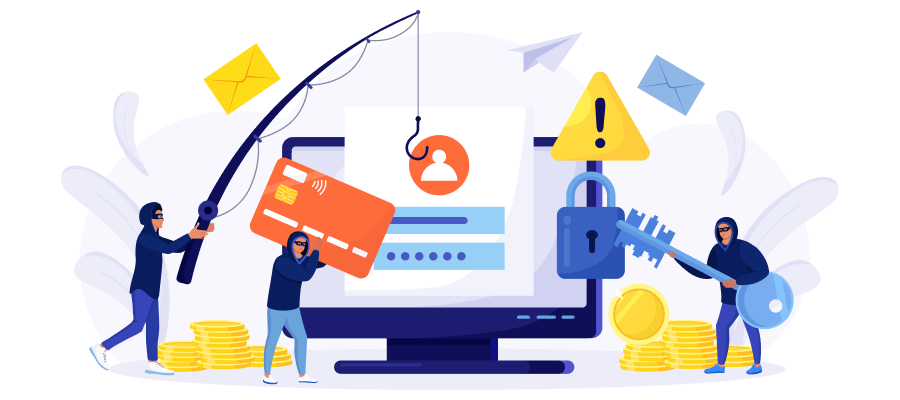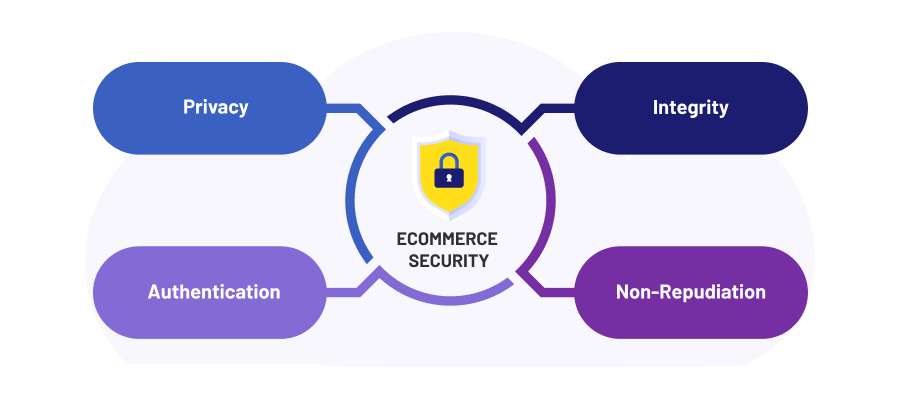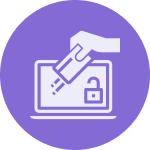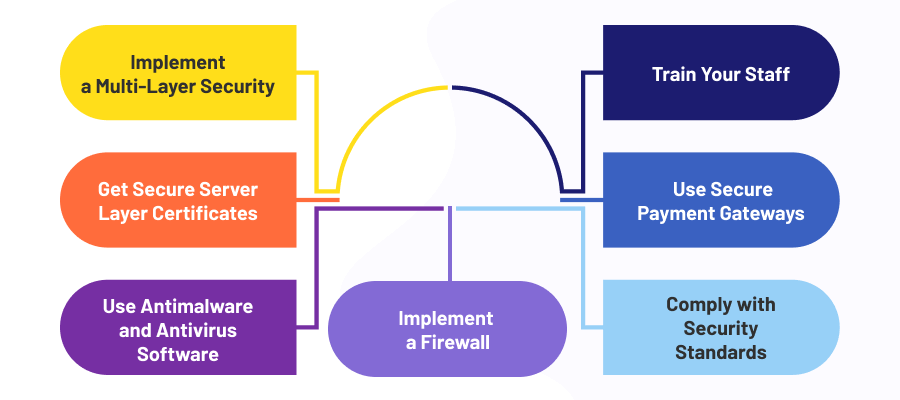Online shopping has become an inextricable part of our lives. With various online platforms to choose from, shopping is now easier and more comfortable than ever. It’s like having a mall at our fingertips, just a click away.
Oftentimes, during purchases, we happily trust our private data to eCommerce stores, whether we consciously think about it or not. But let’s admit, if our personal information were to leak, we would blame those online stores whom we trusted to protect it.
To not disappoint us, retailers take all the steps in advance to keep our information and transactions secure. Typically, businesses invest in building strong eCommerce solutions in order to protect both customer and business-sensitive data. However, to build strong software, there are some issues you need to address.
In this article, we will take a closer look at the potential retail vulnerabilities, and explore how to build robust eCommerce security solutions to tackle them. At the end of the article, you will learn about:
- Why eCommerce security important
- What components it has
- How to tackle common security issues
- How to build a strong eCommerce platform
Let’s dive in.
The Vital Role of eCommerce Security

The retail industry is one of the most targeted sectors for hackers, so for eCommerce businesses, security must be one of the top priorities. At its core, retail privacy involves the implementation of technologies, policies, and practices to safeguard against unauthorized access, data breaches, and cyberattacks.
Business owners put a lot of effort into thwarting eCommerce security issues, as they can have many undesirable consequences. For example, it can lead to financial losses, a damaged brand reputation, a decline in customer loyalty, and more.
Consequently, it is important to create a trustworthy environment where customers feel comfortable sharing their personal and financial information. In upcoming chapters, we will tell you how to get to the point.
Key Pillars of eCommerce Security

Now that we’re aligned on the essence and importance of retail security, let’s delve into the key principles crucial for eCommerce platform safety. In particular, you need to keep an eye on the following principles.
Privacy
Needless to say, keeping customer data confidential is vital. One of the basic steps to achieve this is to prevent the unauthorized sharing of customer data with third parties. There are also many robust data protection measures that are worth putting in place. We will talk about them in detail in the upcoming chapter.
Integrity
Another principle is data integrity. It ensures the accuracy of customer information. Ideally, any data that customers have shared online should remain unmodified. Hence, you need to utilize the client’s information exactly as it is given without changing anything.
Authentication
This principle helps make sure that both the customer and the seller are real. Encourage customers to verify their identities before processing their online transactions. For example, you can do it by employing multi-factor authentication (MFA).
Retailers also need to remain reliable for customers. It is possible to accomplish this by providing evidence that the business delivers what it promises and meets customer expectations through the eCommerce platform.
Non-Repudiation
It’s a legal principle that prevents denial of transactions by both businesses and customers. It offers retailers proof of delivery and the receiver’s identity, making it impossible for either party to deny their involvement later. Non-repudiation can be simply achieved with the help of a digital signature.
Common eCommerce Security Issues and How to Navigate Them
There are numerous factors that can lead to eCommerce security issues. To address them effectively, you should know the potential ones. So, we suggest having a look at the common types of eCommerce security breaches and discussing ways to mitigate them.
Phishing

One of the most significant threats in the retail sector is phishing. Typically, phishing messages come from email addresses or phone numbers similar to those regularly contacted by the intended victims.
For example, hackers can send emails to customers using an email address and template similar to your business’s. In this email, they can warn the user about potential data breaches with a request to provide personal information or change their password urgently by clicking on a link.
If customers click on the link, a damaged program can be automatically installed on their devices and can access important personal and financial data, causing significant harm. To reduce the risk of customer cyberattacks, notify them during registration that you will never request personal information through email or text.
Additionally, to be a step ahead of potential threats, it is worth using innovative technologies like artificial intelligence. Through advanced machine learning algorithms, AI can not only detect but also proactively prevent malicious activities, including the increasingly prevalent threat of phishing, long before they pose a substantial danger.
Discover more Opportunities AI can Give to Your Business
Malware

Another eCommerce security risk that warrants serious attention is malware. It can cause significant inconveniences for both you and your customers. Just picture a scenario where hackers gain access to all your information, lock you out of critical systems, and compromise your business and client data.
It already sounds like a disaster, doesn’t it? But that’s not all the trouble you can get into because of malware. Attackers can require you to pay them highly to give you access back to your systems. So, it is better to take steps to prevent such kinds of cyberattack risks.
You can enhance eCommerce security measures by emphasizing robust antivirus and antispyware software, regular system backups, and network monitoring tools. For example, you can use programs like the Network Performance Monitor, OpManager, and NetFlow Analyzer.
SQL Injections

As a brief grasp of the definition, SQL injection (SQLI) is a cyberattack that injects malicious SQL code into an application, allowing the attacker to view and even change a database.
To ensure your eCommerce application protection and prevent it from becoming a victim of SQLI, you can implement a web application firewall. It will help you detect and block SQL injection attempts. Additionally, it is worth keeping your web application and database software updated to fix known security vulnerabilities.
eSkimming

In the realm of payment security in eCommerce eSkimming has become one of the most widespread issues. In short, it is the theft of credit or debit card information and personal data from payment processors integrated into eCommerce websites.
To effectively defend against eSkimming, consistently apply patches to your web server. Additionally, be careful with third-party API integrations and make sure you keep them up to date. Thoroughly check your external service providers, particularly those responsible for payment processing. Make sure that they follow strong security protocols.
Brute Force Attacks

Have you ever thought about how hackers break your page and get access to it? Oftentimes, they use automated programs that try lots of different combinations of letters, numbers, and characters to guess your password and gain access to your page. This is one of the most common security issues of eCommerce, called a brute force attack.
To safeguard your retail platform, select a complex, robust password for your admin panel and update it regularly. Additionally, encourage your customers to create strong passwords by providing guidelines on the required composition and length. During registration, only accept passwords that meet your specified criteria.
Additionally, you can use blockchain-based intrusion detection systems (IDS) to add an extra layer of protection. Basically, these systems leverage the decentralized approach of blockchain technology to enhance the integrity and transparency of safety logs. This extra protection helps keep your network safe from various threats.
Discover how to Enhance Cybersecurity with the Blockchain-Based IDS Systems
7 Essential Steps to Bolster Your eCommerce Security

To protect your eCommerce platform and ensure the safety of both your business and customer data, you need to employ electronic security systems. If you do not know where to start, we suggest having a look at the following basic steps to effectively address security concerns.
1. Implement a Multi-Layer Security
To make life more challenging for hackers, you can implement a multiple security layer approach. In essence, it adds additional barriers that hackers must overcome to breach your website.
One of the effective layers to consider is a content delivery network, which is equipped with machine learning to prevent DDoS threats and destructive traffic.
Another critical layer to enhance the security of your eCommerce solution is employing MFA. Ideally, you should encourage both your customers and employees to log in by using MFA. As a result, you will be sure that only authorized individuals gain access to sensitive and private data.
2. Get Secure Server Layer Certificates
Probably one of the top priorities of each eCommerce website is to remain secure and trustworthy for customers.
Let’s have a look at HTTP and HTTPS. Undoubtedly, you know that just one letter makes sense. Today 95% of websites on Google use HTTPS. And that is for a reason. HTTPS employs encryption mechanisms, such as a secure socket layer (SSL) certificate, to secure data transmission and ensure a higher level of data privacy and safety. Hence, you can significantly improve your eCommerce cyber security by adding an SSL certificate.
In general, SSL safeguards the information shared between your website and your customers’ browsers, such as credit card numbers or passwords. These certificates ensure that the data remains safe and unaltered during transmission, thus making it hard for attackers to tamper with sensitive information.
Plus, SSL serves as a credibility indicator signal for search engines and can increase your online visibility.
3. Use Antimalware and Antivirus Software
By using antivirus and antimalware software, you can significantly reduce eCommerce security risks. These tools protect your website and customer data from harmful online threats. With robust solutions in place, you can prevent viruses like worms, trojans, ransomware, spyware, and others from infecting your system.
Numerous platforms are available to help you achieve this goal. For example, Forbes recommends Bitdefender, Avira, and AVG as the top three best antivirus malware removal software.
4. Implement a Firewall
Implementing a firewall is another crucial step to enhance the security of your eCommerce solution. As a firewall monitors incoming and outgoing traffic in a network, it plays a pivotal role in thwarting unauthorized access, data breaches, and various cyber threats. Simply put, a firewall acts like a gatekeeper, allowing only trusted traffic to get through.
There are many firewall software programs to consider. If you do not know which one to choose, we suggest keeping an eye on Gartner’s list. Here you can find options like FortiGate Next-Generation Firewall, Check Point Quantum, PA-Series, and more.
5. Comply with Security Standards
To better safeguard customer information, retailers should comply with industry security standards. Here are the core compliance standards each eCommerce store owner needs to meet:
- The Payment Card Industry Data Security Standard (PCI DSS). A global cybersecurity standard to safeguard card transactions and protect cardholders’ personal information.
- Service Organization Control (SOC). It is a certification obtained through a third-party audit and reflects the company’s management of financial or personal information.
- International Organization for Standardization (IOS). It provides common requirements to ensure the safety, trustworthiness, and quality of products and services.
6. Use Secure Payment Gateways
Another important step to mitigate the security issues of your eCommerce solution is implementing secure payment gateways. That is one of the most effective ways to ensure protected transfers and prevent unauthorized access and potential breaches.
In particular, secure payment gateways, like PayPal and Stripe, implement advanced safety measures to protect online transactions. For example, PayPal asks customers to enter a one-time code sent to their mobile devices. It boosts the protection for the payment process and minimizes the risk of fraudulent transactions.
Discover more Benefits of Payment Gateway Integration
7. Train Your Staff
With a skilled team in place, managing various issues of eCommerce security will be much easier. Thus, the final step on our list involves providing employees with cybersecurity and privacy training.
As a result, your team will be skilled enough to identify and mitigate potential threats effectively at an early stage, preventing them from evolving into serious and significant problems. Ultimately, it will assist in creating a more safe and trustworthy online business ecosystem.
However, enhancing your eCommerce security doesn’t necessarily require an in-house team. You can bring in external professionals, such as DevOps experts, to bolster the security of your retail platform.
Take a Step to Safeguard Your eCommerce Platform
Building advanced retail and eCommerce software is no small feat. Mitigating eCommerce security risks requires passion and professionalism. Without an experienced team by your side, it can be overwhelming.
But if you do not have an appropriate team, do not worry. We stand ready to support you with our wealth of experience in delivering successful projects. Reach out to us, and we will help elevate your retail business security.






























